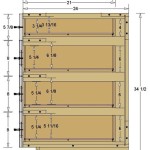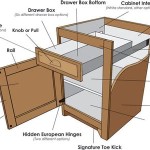Essential Aspects of Installing Tile Kitchen Countertops
Tile kitchen countertops offer a stylish and durable choice, transforming your kitchen into a culinary haven. However, a successful installation requires careful consideration of several essential aspects to ensure a flawless and long-lasting result.
This comprehensive guide will delve into the fundamental elements involved in installing tile kitchen countertops, providing you with the knowledge and insights necessary for a successful project.
1. Material Selection
The type of tile you choose will significantly impact the durability, appearance, and maintenance of your countertop. Consider factors such as porosity, water resistance, and wear resistance. Porcelain and ceramic tiles are popular choices for countertops due to their durability and ease of cleaning.
2. Surface Preparation
A well-prepared surface is vital for a secure and stable countertop installation. The subfloor must be level, flat, and free from any irregularities. Use a concrete backer board or cement board to provide a smooth and stable base for the tile.
3. Layout and Design
Before applying any adhesive, dry-lay the tiles on the countertop to plan the layout and ensure a pleasing aesthetic. Consider the size and shape of the tiles, as well as any patterns or borders you wish to create. Use a level to ensure the tiles are level and square.
4. Adhesive Selection
Choosing the right adhesive is crucial for bonding the tiles to the subfloor. Use a thin-set mortar specifically designed for tile countertops. Thin-set mortar provides a strong and flexible bond, ensuring the tiles remain securely in place over time.
5. Tile Installation
Spread the thin-set mortar onto the prepared surface and use a notched trowel to create ridges. Carefully place the tiles into the mortar, pressing down firmly. Use spacers to maintain consistent spacing between the tiles.
6. Grouting
Once the tiles are installed, apply grout to fill the joints between them. Choose a grout color that complements the tiles and provides a water-resistant seal. Use a grout float to press the grout into the joints and remove any excess.
7. Sealing
After the grout has dried, apply a penetrating sealer to the countertop. The sealer will protect the tiles and grout from stains and moisture, ensuring the durability and longevity of your countertop.
Conclusion
Installing tile kitchen countertops requires careful attention to several essential aspects. This guide has provided a comprehensive overview of these aspects, equipping you with the knowledge and insights necessary to ensure a successful project. Remember, a well-installed tile kitchen countertop will not only enhance the functionality of your kitchen but also add beauty and elegance to your culinary space.

How To Tile Countertops Diy Family Handyman

Installing A Tile Countertop Ibuildit Ca
:max_bytes(150000):strip_icc()/brick-style-tile-countertop-5baf9aca46e0fb00264554ab.jpg?strip=all)
12 Tile Kitchen Countertops That Are Surprisingly Fresh

15 Tile Countertop Ideas Here S Everything You Need To Know Hunker

Schluter Countertop System Installation Segment 3 Tiled Under Sink Backsplash Tiles

Installing A Tile Countertop Ibuildit Ca

Tile Countertops Make A Comeback Know Your Options

Why Tile Is A Great Option For Kitrchen Countertops

How To Install Granite Tile Countertops Kitchen Diy Family Handyman

Tile Countertops Countertop Guidescountertop Guides








